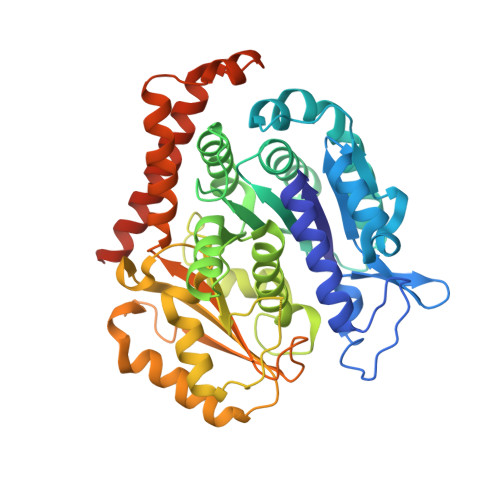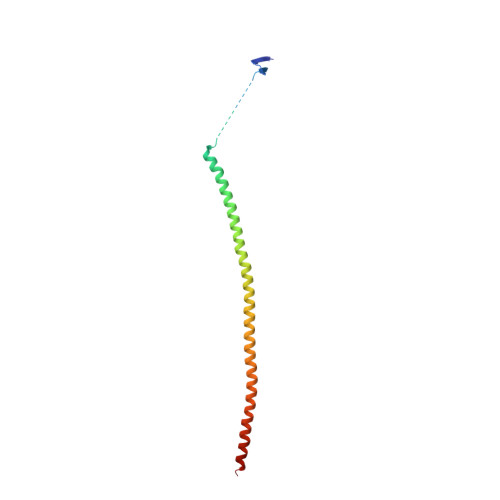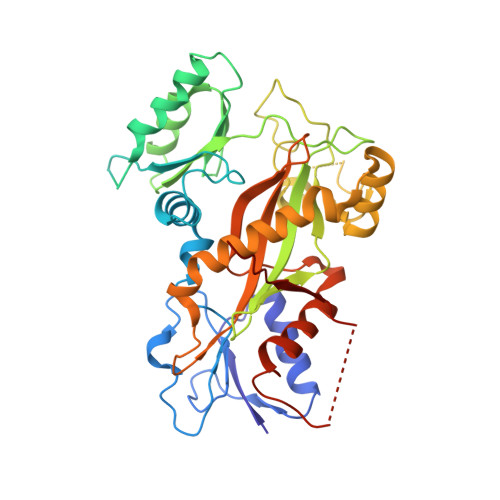Structural Insights into the Pharmacophore of Vinca Domain Inhibitors of Microtubules
Wang, Y., Benz, F.W., Wu, Y., Wang, Q., Chen, Y., Chen, X., Li, H., Zhang, Y., Zhang, R., Yang, J.(2016) Mol Pharmacol 89: 233-242
- PubMed: 26660762
- DOI: https://doi.org/10.1124/mol.115.100149
- Primary Citation of Related Structures:
4ZHQ, 4ZI7, 4ZOL, 5BMV - PubMed Abstract:
Antibody-drug conjugates (ADCs) have achieved great success in cancer therapy in recent years. Some peptidyl microtubule inhibitors consisting of natural and unnatural amino acids, such as monomethyl auristatin E (MMAE) and F (MMAF), are extremely cytotoxic and have been used as a payload in ADCs. However, their precise molecular interaction with tubulin and microtubules remains unclear. We determined the crystal structures of tubulin in complex with three ultra-potent peptidyl microtubule inhibitors [MMAE, taltobulin (HTI- 286), and tubulysin M] at 2.5 Å. Our data showed that the three peptides bound to the vinca domain and shared a common and key pharmacophore containing two consecutive hydrophobic groups (Val, Ile-like side chain). These groups protruded in opposite directions into hydrophobic pockets on the tubulin β and α subunits. Nitrogen and oxygen atoms from the same backbone formed hydrogen bonds with Asn329 from the α subunit and Asp179 from the β subunit in a direction normal to the surface formed by the aforementioned hydrophobic groups. In addition, our crystal structure data indicated that tubulysin M bound to the β subunit alone, providing a structural explanation for its higher affinity. We also compared the conformations of two representative structurally different vinca domain compounds, ustiloxin D and vinblastine, with those of the aforementioned peptidyl ligands, and found that they shared a similar pharmacophore. Our findings lay a foundation for the rational design of novel vinca domain ligands and may facilitate the development of microtubule inhibitors with high specificity, affinity, and efficiency as payloads for ADCs in cancer therapy.
Organizational Affiliation:
State Key Laboratory of Biotherapy and Cancer Center, West China Hospital, Sichuan University, and Collaborative Innovation Center for Biotherapy, Chengdu, China (Yu.W., Ya.W., Y.C., X.C., H.L., R.Z., J.Y.); Department of Pharmacology and Toxicology, University of Louisville School of Medicine, Health Sciences Center, Louisville, Kentucky (F.W.B.); Shanghai Institute of Applied Physics, Chinese Academy of Sciences, Shanghai, China (Q.W.); and Pharmacology and Pharmaceutical Sciences School of Medicine, Tsinghua University and Collaborative Innovation Center for Biotherapy, Beijing, China (Y.Z.).

























